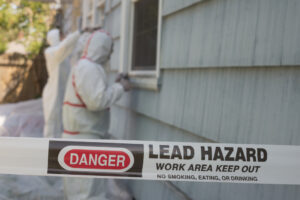The EPA and the Department of Justice (DOJ) announced a settlement with Logan Square Aluminum Supply Inc., resolving alleged violations of the federal Lead Renovation, Repair, and Painting (RRP) regulations at renovation projects Logan Square and its contractors performed in Chicago and Chicago suburbs.
Under the court settlement, Logan Square will:
- Implement a comprehensive program to ensure its contractors are certified and trained to use lead-safe work practices to avoid creating lead dust during home renovation activities.
- Under a parallel administrative settlement agreement:
- Pay a $400,000 penalty.
- Perform $2 million of lead-based paint abatement work in lower-income properties located in Chicago and Chicago suburbs in communities with a higher incidence of childhood lead poisoning
“Lead exposure from lead-based paint continues to be a hazard for American families living in older homes, and children in those homes are particularly vulnerable,” says Larry Starfield, EPA acting assistant administrator for the Office of Enforcement and Compliance Assurance, in an EPA news release. “This settlement requires Logan Square Aluminum Supply, Inc. to take necessary steps to ensure that it meets appropriate safety requirements in future renovation projects that may disturb lead-based paint.”
Under the RRP rule, renovation is defined as any activity that disturbs painted surfaces and includes most repair, remodeling, and maintenance activities, such as electrical work, plumbing, carpentry, and window replacement.
The RRP rule requires:
- Renovators to be trained in the use of lead-safe work practices,
- Renovators and firms to be certified,
- Providers of renovation training to be accredited, and
- Renovators to follow specific work practice standards.
Common mistakes under the RRP rule include:
- Ensuring all employees are trained in RRP rule processes;
- Providing homeowners or occupants with an approved pamphlet about lead-based paint hazards before a renovation;
- Posting signs to clearly define the work area and warn people to remain outside that area;
- Compliance with the RRP rule’s work practice standards, such as closing doors and windows to interior work areas; covering floor surfaces, ducts, and other openings to work areas with plastic sheeting; and covering the ground with plastic sheeting to capture falling paint chips from exterior renovations.
Both Logan Square and its contractors are responsible for compliance with the RRP rule to protect the health and safety of families, especially children under the age of 6, who are most susceptible to lead hazards. For these projects, Logan Square must contract with only EPA-certified firms and renovators, ensure they maintain certification, use lead-safe work practices, and document their work with checklists during renovations.
Logan Square will add a link on its website to the EPA’s content on lead-safe work practices. In addition, Logan Square will take action to respond to situations in which a contractor is not operating in compliance with the RRP rule, investigate all reports of potential noncompliance, and ensure any violations are corrected and reported to the EPA.
The EPA first discovered the alleged violations through customer complaints about a project performed in Evanston, Illinois. The Agency learned that Logan Square frequently subcontracted work to uncertified firms and did not use lead-safe work practices, perform required post-renovation cleaning, provide the EPA-required lead-based paint pamphlets to occupants, or establish records of compliance. Logan Square also conducts business under other names, including Climate Guard Thermal Products Co. and Studio 41.
The consent decree was lodged in the U.S. District Court for the Northern District of Illinois. Notice of the lodging of the consent decree appeared in the Federal Register, which allowed for a 30-day public comment period before the consent decree could be entered by the court as final judgment.

